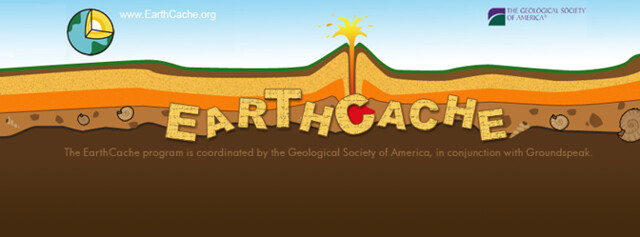

El azufre es una sustancia brillante y gruesa que puede ser la causa de todo ese hedor. Puede ser tanto tóxico como no tóxico, dependiendo de su estado. El azufre ha existido durante millones de años, incluso se mencionó en la Biblia y la Torá. En el siglo sexto, estaban descubriendo cómo obtenerlo de la pirita. Fueron a 1780, ese hombre brillante (Antoine Lavoisier) reflexionó sobre la idea de que azufre es un elemento, no un compuesto. Luego pasó a probar su teoría y azufre tomó su lugar en la Tabla Periódica.
El azufre es responsable de representar aproximadamente el 3 por ciento de la masa de la Tierra. Se encuentra principalmente en el núcleo de la Tierra; 100 veces más frecuente que en su corteza. Este elemento también se encuentra en cuevas. Las snottitas (como las estalactitas viscosas) absorben bacterias, que a su vez "digieren" el sulfuro de hidrógeno. Estos hedor apestoso y goteante exudan ácido sulfúrico, que en realidad puede quemar agujeros en la ropa e incluso en las rocas. De hecho, los snottites son en parte responsables de la formación de nuevos sistemas de cuevas. El azufre en su estado puro se puede encontrar cerca de las aguas termales, las piscinas y, en este caso, los volcanes.
El Teide es un volcán ubicado en la isla de Tenerife. Tiene una altura de 3.718 metros sobre el nivel del mar y 7.500 metros sobre el fondo del océano. Es el pico más alto de España con 3.718m, seguido por Mulhacén (Sierra Nevada, Granada) con 3.482 metros y Aneto (Huesca) con 3.404 metros. También es el tercer volcán más alto del mundo de Hawai, Mauna Kea con 10.203m (4.205m de altitud) y Mauna Loa con 9.000m (4.169m de altitud). La altitud del Teide también convierte a la isla de Tenerife en la décima isla más alta del mundo. El Parque Nacional del Teide es el parque nacional más visitado de Europa con una asistencia anual de cuatro millones de turistas. Puede subir el Teide a este geocaché (pero esto tomará alrededor de 4.5 a 5 horas) o puede subir el teleférico desde la base.
ADVERTENCIA:
NO COLOQUE NADA EN LOS AGUJEROS
Para registar este earthcaché de tierra como se encuentra, debe ir a las coordenadas dadas y mirar los agujeros de azufre, luego debe enviarnos un correo electrónico (a través de nuestro perfil de geoching) con las respuestas a las siguientes preguntas. Puede registrar el caché de tierra sin haber recibido mi respuesta Si no recibo el correo electrónico con las respuestas correctas, el registro puede eliminarse sin previo aviso..
1. Como es el suelo alrededor de los agujeros?
2. Qué olor puedes oler cerca de los agujeros?
3. Al tocar las rocas es caliente caliente o frío?
4. Haga una foto de usted o sus amigos en los agujeros y agréguelos a su registro. (opcional)
(Traducido con google translate)
English


Sulphur is a bright and chunky substance that may be the cause of all that stench. It can be both toxic and non-toxic, depending on its state.
Sulfur has been around for millions of years, it was even mentioned in the Bible and the Torah. In the 6th century, Chinese people knew about sulfur and by the 3rd century they had figured out how to get it from pyrite. They went on to use this substance in medicine and even gunpowder.
However, it wasn’t until 1777, that one brilliant man (Antoine Lavoisier) pondered the idea of Sulfur being an element, not a compound. He went on to prove his theory and Sulfur took its place on the Periodic table.
Sulfur is responsible for making up about 3 percent of the Earth’s mass. It is mostly found in Earth’s core; 100 times more prevalent then in its crust. This element is also found in caves. Snottites (like slimy stalactites) absorb bacteria, which in turn “digests” hydrogen sulfide. These stinky, drippy snottites ooze sulfuric acid, which can actually burn holes in clothing and even rocks. In fact, the snottites are partly responsible for the formation of new cave systems.
Sulfur in its pure state can be found near hot springs, pools and in this case volcanos.
Teide is a volcano located on the island of Tenerife. It has a height of 3.718 meters above sea level and 7.500 meters above the ocean floor. It is the highest peak in Spain with 3.718m, followed by Mulhacén (Sierra Nevada, Granada) with 3.482 meters and Aneto (Huesca) with 3.404 meters. It is also the third highest volcano in the world if measured from its oceanic base, behind two other volcanoes located on the island of Hawaii, Mauna Kea with 10.203m (4.205m altitude) and Mauna Loa with 9.000m ( 4.169m altitude).
The altitude of Teide also makes the island of Tenerife the tenth highest island in the world.
The Teide National Park is the most visited national park in Europe with an annual attendance of four million tourists.
You can either walk up Teide to this geocache (but this will take about 4.5 to 5hours) or you can get the cable car up from the base.
WARNING:
DO NOT PLACE ANYTHING INTO THE HOLES (HANDS OR FACES)
In order to claim this earth cache as found you have to go to the given coordinatesand look at the sulpher holes then you have to send us an email (via our geoching profile) with the answers to the follow questions.You can log the earth cache without having received my response. If i do not receive the email with the correct answers, the log may be deleted without warning..
1. What colour is the ground around the holes?
2. What smell can you smell near the holes?
3. Touching the rocks near the holes are they warm, hot or cold?
4. Take a photo of yourself or of your gps at the holes and add to your log. (optional)
(Translated with google translate)